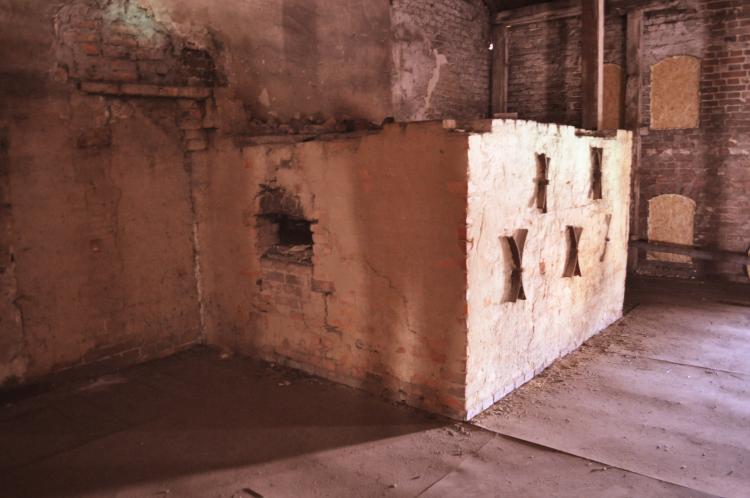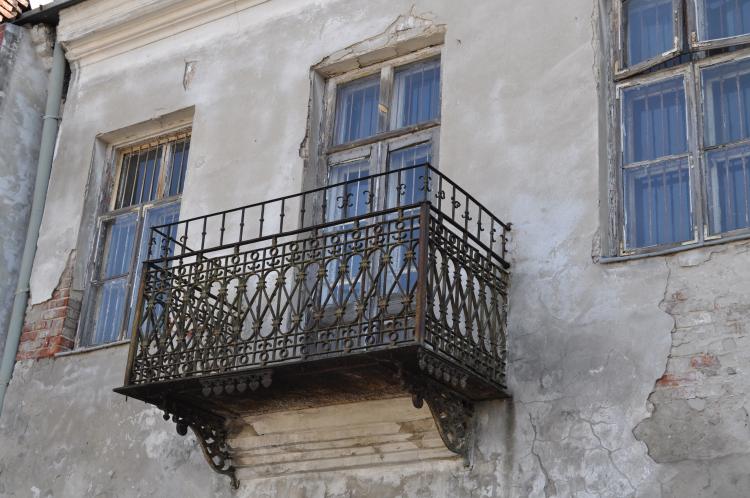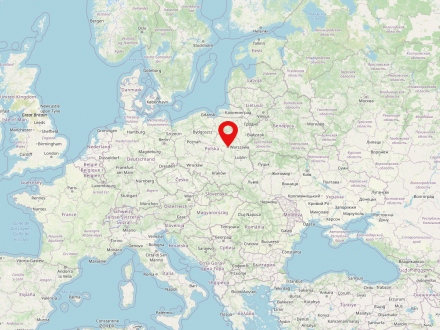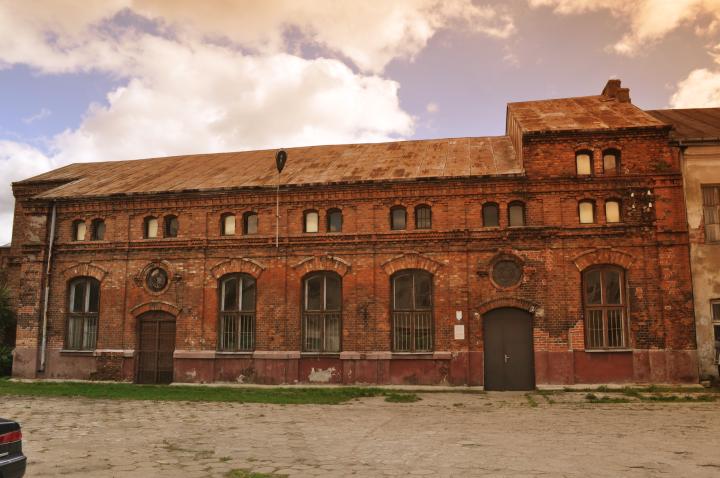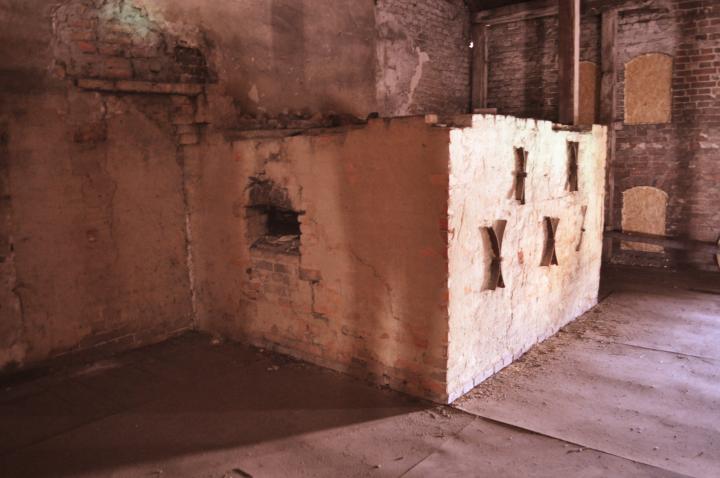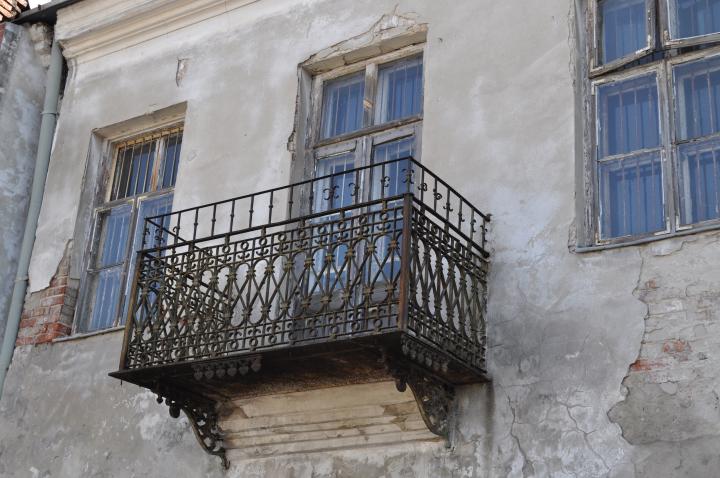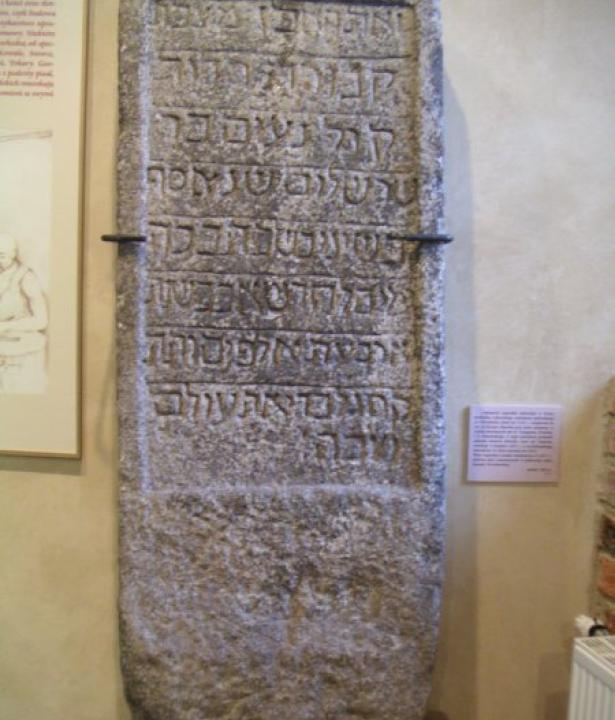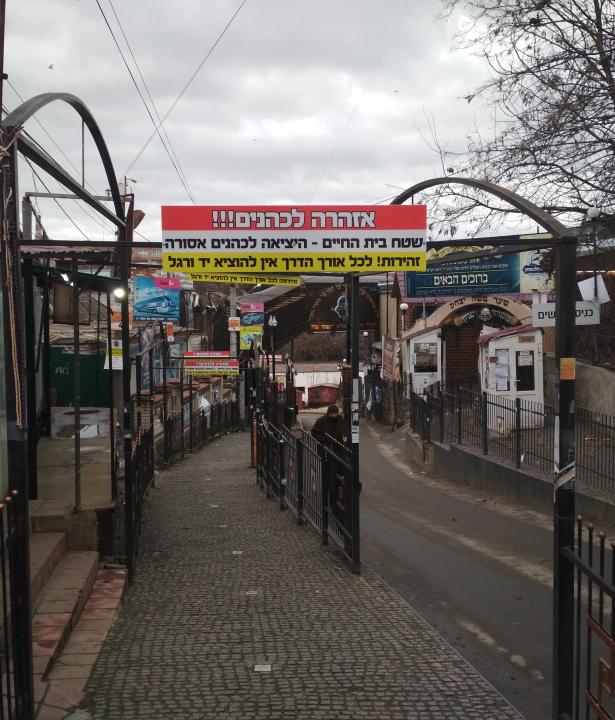German troops occupied Góra Kalwaria on September 8, 1939. The beginning of the occupation put an end to the exuberant life of the Jewish shtetl. It also marked the beginning of the demise of Tzadik Alter’s household, who had gone to Warsaw two days earlier. Shortly after his departure, the occupiers set about looting the property he had left behind: furniture, clothing and other valuables. Of particular importance to the Nazis was the extensive library located in the Tzadik's mansion. Its most valuable part was the collection of rare prints with rabbinic commentaries and manuscripts by prominent rabbis. Also of unique value were rabbinic and kabbalistic manuscripts, some of which dated back to the 11th and12th centuries, and out-of-print works by great Hasidic personalities. Many volumes were bound in leather with gilded inscriptions, making the library expanded by Rebbe Abraham Alter a collection of exceptional cultural value. The only library catalog, compiled in the 1930s, unfortunately did not survive the Holocaust, so we do not know the exact number of the volumes in the collection
The wartime fate of the Alter library is an episode typical not only of the Jewish history of Góra Kalwaria. It is also exemplary of the fate of many Jewish collections in Nazi-occupied Central and Eastern Europe, revealing the mechanisms, structures and phases of a practice that went down in history under the name NS-Raubkunst. Alter’s library and its history after 1939 also provides a characteristic example of a large part of Jewish library collections and cultural property in the early postwar period. The issues still harbor more questions than answers and require further thorough research.
The first trace of interest in Jewish libraries in occupied Poland is provided by correspondence sent as early as September 16, 1939 to the SD Hauptamt in Berlin from the SD post in Dessau. It concerns a proposal by Erich Wilken, the Evangelical pastor Protestant pastor in Magdeburg's Martinsgemeinde, who was in close contact with Franconian Gauleiter Julius Streicher. In his letter, Wilken called for a review of Jewish libraries in Poland in search of Kabbalistic literature, which could, in his opinion, have significant propaganda and political value. Based on an analysis of available sources, it seems doubtful that Wilken knew of the existence of Alter's library. There is also no indication that the most valuable part of its collection fell into the hands of large-scale robberies of library collections and works of art, often in competition with each other, carried out by German commandos affiliated with the RSHA.
On the other hand, noteworthy is the figure of Julius Streicher, publisher in 1923-1945 of the anti-Semitic magazine "Der Stürmer," which directed appeals to its readers in occupied Poland – both military and civilian administration representatives – to send in books, documents and archival materials left behind by Jews, among other things. One of those who responded to "Stürmer's" appeal was the commissary mayor of Góra Kalwaria, Ewald Jahnke, before the war a member of the German minority in that town, working as a carter employed by one of the local Jewish families. An exchange of correspondence with Streicher, the gauleiter of Franconia, reveals that in the fall of 1940 Jahnke sent two boxes of books to Nuremberg, possibly containing individual volumes from Alter's library. The shipment added to Streicher's collection of looted Jewish books, totaling some 10,000 volumes, 8,000 of which were transferred shortly after the war to the Offenbach Archival Depot, and later given to the Jewish Cultural Reconstruction organization, which redistributed Jewish books and religious objects looted by the Nazis around the world. From an analysis of the collection that later made its way to New York, we know that while it did indeed contain books from Góra Kalwaria, no volumes from Alter's library could be identified among them.
The second stage of the dispersal of Rabbi Alter's book collection probably fell in the first half of 1941, a period shortly after the deportation of the Jewish population from Góra Kalwaria to the Warsaw ghetto on February 25 and 26. The rationale for this is provided by the recollections of local residents, who noticed in the courtyard of the tzaddik's mansion a German military truck loaded with "books in tarpaulin sacks on which lay a dozen large books bound in brown leather." Where exactly could the German truck loaded with books have gone from Alter's court?
We are condemned only to conjecture. One possibility is that the looted volumes contributed to the collections of pre-war Polish academic libraries that, under the German occupation, came under the administration of the Main Library Board operating under the Department of Culture and Teaching under the Nazi General Government (GG). In this case, books from Góra Kalwaria may have been transferred to the depots of the then recently established Staatsbibliothek Warschau. From post-war accounts of Polish librarians, we know that valuable Judaica were included in the Staatsbibliothek Warschau, which probably, like parts of the special collections of the Polish National Library or the Krasinski Library, were burned during the Warsaw Uprising in the early fall of 1944. Another possibility is that the valuable truckload from Góra Kalwaria went to the "scientific" institution established by the Nazis in the occupied Poland – Institut für Deutsche Ostarbeit (IDO), with headquarters in Kraków and branches in Warsaw, among other places. Within the IDO functioned one of its most important departments, the Referat Judenforschung, which was in close contact with the Institut der NSDAP zur Erforschung der Judenfrage in Frankfurt am Main created by Alfred Rosenberg and possessing a rich library of seized Judaica. The IDO itself aimed, among other things, to compile a bibliography and collect literature on the history of the Jews in Eastern Europe, as well as to search for Judaica in archives. Unfortunately, the activities of the Warsaw branch of the IDO are too poorly documented to draw any conclusions about the fate of Alter's library.
It is also possible that the load of the truck from Góra Kalwaria went to a completely different place in the territory of the GG or directly into the Third Reich. It could have ended up in Lodz, where a branch of the Frankfurt-based Institut der NSDAP zur Erforschung der Judenfrage was planned to be established and where a campaign was underway to confiscate and confiscated Jewish books from the Lodz ghetto. In turn, via Lodz, it could even have been sent to the Frankfurt NSDAP Institute or taken to Poznań, where there was the headquarters of Haupttreuhandstelle Ost as well as newly opened German university and a repository for books confiscated in Poland by the Nazis. Finally, the most valuable part of Alter's collection may have been transferred to the RSHA's main library in Berlin, which collected Judaica from occupied Europe. RSHA's library – as well as a large part of the objects of Berlin libraries and museums – was among others taken in the second half of 1943 to secret repositories in castles under the SS administration in Lower Silesia. Here, in 1945, they fell into the hands of special NKVD units seizing captured cultural property, which was then taken to secret depots in the Soviet Union. The collections stored in them began to be revealed and transferred to Russian libraries only after the collapse of the USSR. However, the current situation caused by the war in Ukraine makes it impossible to undertake more thorough provenance research.

